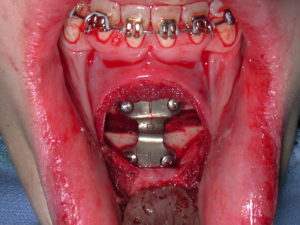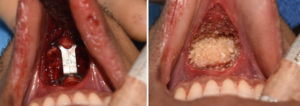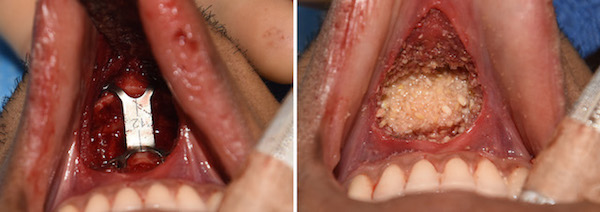The sliding genioplasty is a long established method of chin reshaping. While often perceived as being for horizontal augmentation only, it offers much more diverse dimensional chin changes. Vertical lengthening/shortening as well as width narrowing can also be done by internal wedge bone removal as well. When horizontal augmentation is done for the downfractured bone segment an inevitable bony step occurs in the normally convex anterior surface of the chin bone. The magnitude of this step deformity depends on the amount of horizontal bone movement done or in the length of the bony step.

In the November 2019 issue of the Journal of Craniofacial Surgery an article was published entitled ‘Bonegraft Wrap Technique -Avoiding Accentuated Labiomental Groove After Genioplasty.’ In this paper the authors present a wrap technique designed to avoid the occurrence of unaesthetic deep labiomental fold in genioplasty. Their technique uses a particulate bone graft that is wrapped in a collagen Surgicel mesh which is placed over the osteotomized segment of the chin at the location of the fixated titanium plate and screws.
It is clear that eliminating the step bony defect is helpful in ameliorating the deepening of the labiomental fold. While an autogenous bone graft as this paper advocates would be ideal, few patients want to have a bone graft harvested to do so. A variety of synthetic implants, including bone cements, have been placed into the bony step and I have never seen an infection from so doing…but that is always a potential concern.

Dr. Barry Eppley
Indianapolis, Indiana



